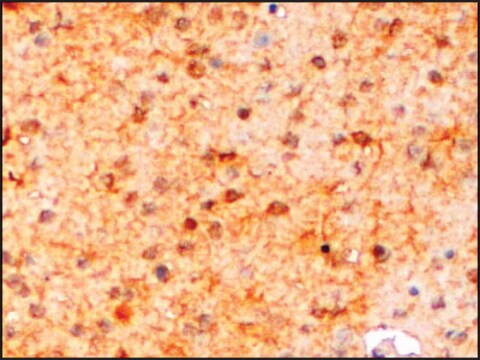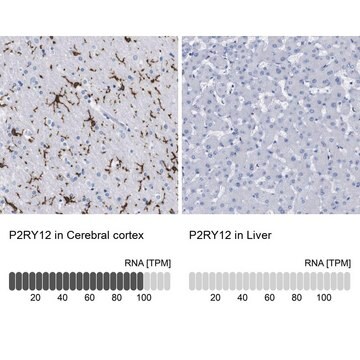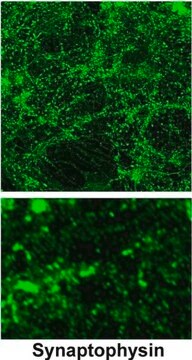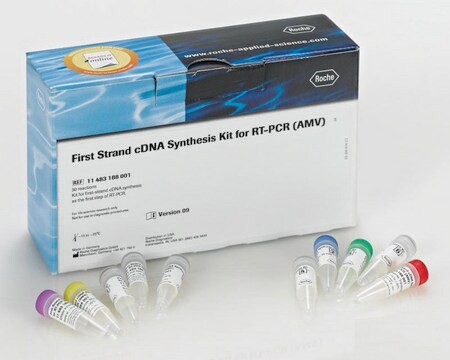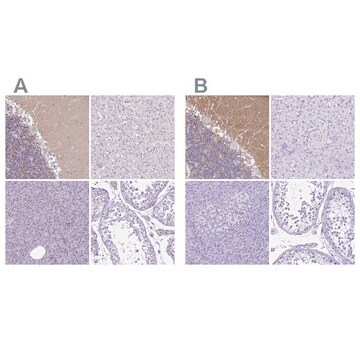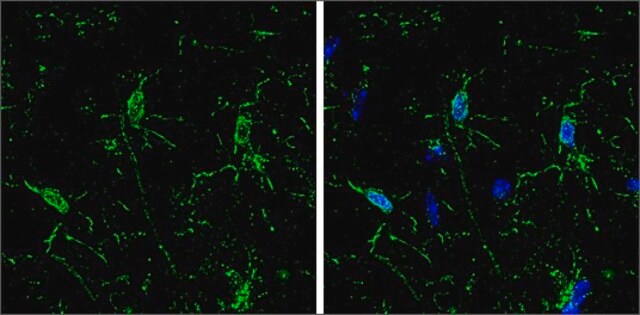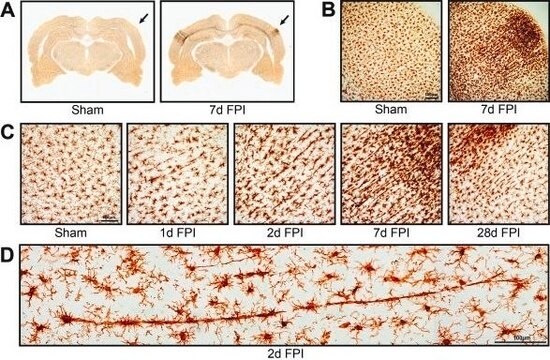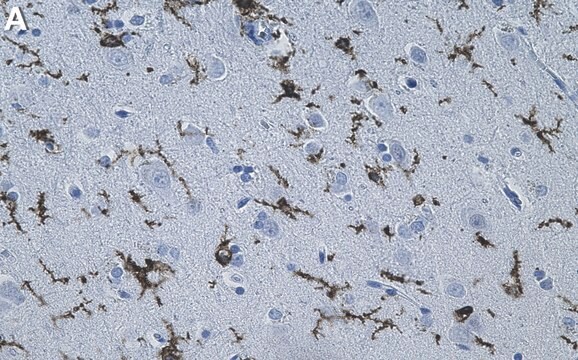S2177
Anti-Synaptotagmin antibody produced in rabbit
IgG fraction of antiserum, buffered aqueous solution
Sign Into View Organizational & Contract Pricing
All Photos(1)
About This Item
Recommended Products
biological source
rabbit
Quality Level
conjugate
unconjugated
antibody form
IgG fraction of antiserum
antibody product type
primary antibodies
clone
polyclonal
form
buffered aqueous solution
mol wt
antigen 65 kDa
species reactivity
rat
technique(s)
microarray: suitable
western blot: 1:5,000 using extract of rat brain membrane fraction
UniProt accession no.
shipped in
dry ice
storage temp.
−20°C
target post-translational modification
unmodified
Gene Information
human ... SYT1(6857)
mouse ... Syt1(20979)
rat ... Syt1(25716)
Related Categories
General description
Synaptotagmin (Syt, p65) is an abundant synaptic vesicle (SV) membrane protein. It is characterized by a short intravesicular N-terminal domain, a single transmembrane region and two copies of highly conserved internal repeats, known as the C2A and C2B domains, which are homologous to the C2 regulatory region of protein kinase C (PKC) in the cytoplasmic domain. At least eight different isoforms of synaptotagmin (SytI-VIII) are expressed in the brain, four of which (Syt IV, V, VII and VIII) are also expressed in non-neuronal tissues.
Specificity
The sequence is highly conserved among species (SytI) and is not found in other known synaptotagmin isoforms (SytII-VIII).
Immunogen
synthetic peptide corresponding to N-terminus of synaptotagmin I (SytI) of rat origin (amino acids 1-16 with C-terminally added lysine), conjugated to KLH.
Application
Anti-Synaptotagmin antibody produced in rabbit has been used:
- for cell surface labelling of synaptotagmin I (SytI)
- in immunofluorescence microscopy
- in western blotting
Biochem/physiol Actions
Synaptotagmin binds Ca2+ phospholipids with high affinity and has a central role in Ca2+ regulated neurotransmitter release. Synaptotagmin functions as a Ca2+ sensor and is required for efficient exocytosis, particularly in the vesicle docking and/or fusion step with the plasma membrane. Ca2+ influx triggers synaptotagmin to interact with either syntaxin or SNAP-25 and the cytoplasmic domain of neurexin leading to fusion and exocytosis. Mutations or deletion of synaptotagmin result in severely impaired Ca2+ triggered neurotransmitter release. Synapses of SytI knockout mice lack the fast-component of Ca2+ dependent neurotransmitter release, but exhibit no changes in the slow, Ca2+ independent component of synaptic vesicle exocytosis.
Physical form
Solution in 0.01 M phosphate buffered saline, pH 7.4, containing 15 mM sodium azide.
Disclaimer
Unless otherwise stated in our catalog or other company documentation accompanying the product(s), our products are intended for research use only and are not to be used for any other purpose, which includes but is not limited to, unauthorized commercial uses, in vitro diagnostic uses, ex vivo or in vivo therapeutic uses or any type of consumption or application to humans or animals.
Not finding the right product?
Try our Product Selector Tool.
Storage Class Code
12 - Non Combustible Liquids
WGK
nwg
Flash Point(F)
Not applicable
Flash Point(C)
Not applicable
Choose from one of the most recent versions:
Already Own This Product?
Find documentation for the products that you have recently purchased in the Document Library.
Tumor protein D52 controls trafficking of an apical endolysosomal secretory pathway in pancreatic acinar cells
Messenger SW, et al.
American Journal of Physiology: Gastrointestinal and Liver Physiology, 305(6), G439-G452 (2013)
The products of the Drosophila stoned locus interact with synaptic vesicles via synaptotagmin
Phillips AM, et al.
The Journal of Neuroscience, 20(22), 8254-8261 (2000)
Expression, localization, and functional role for synaptotagmins in pancreatic acinar cells
Falkowski MA, et al.
American Journal of Physiology: Gastrointestinal and Liver Physiology, 301(2), G306-G316 (2011)
Michelle A Falkowski et al.
American journal of physiology. Gastrointestinal and liver physiology, 301(2), G306-G316 (2011-06-04)
Secretagogue-induced changes in intracellular Ca(2+) play a pivotal role in secretion in pancreatic acini yet the molecules that respond to Ca(2+) are uncertain. Zymogen granule (ZG) exocytosis is regulated by soluble N-ethylmaleimide-sensitive factor attachment protein receptor (SNARE) complexes. In nerve
Gui-Hai Chen et al.
Neurobiology of aging, 28(4), 611-618 (2006-05-09)
The age-related decline of learning and memory is a common phenomenon in humans and animals, even though the underlying mechanism is not yet known. In the present study, we propose that synaptotagmin 1 (Syt 1) might be a synaptic protein
Our team of scientists has experience in all areas of research including Life Science, Material Science, Chemical Synthesis, Chromatography, Analytical and many others.
Contact Technical Service